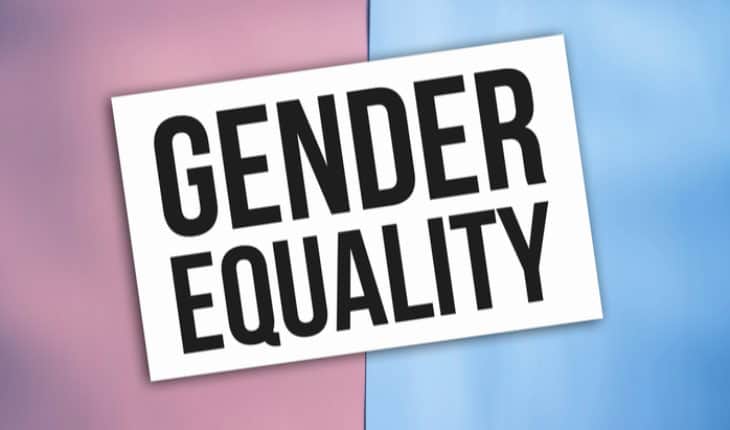Early adolescence is where gender inequalities most markedly emerge, according to new research from across 40 low- and middle-income countries in Asia and the Pacific.
The research, published in Lancet Global Health and led by researchers at Burnet Institute and the University of Melbourne, is the first systemic analysis of gender inequality across childhood and adolescence.
Funded by UNICEF, the research focused on 40 low and middle-income countries in Asia and the Pacific, and it includes an in-depth analysis of 87 indicators measuring health, education and transition to employment, protection, and the safety of the environment in which young people live in.
The study found that adolescent girls experience a high burden of poor sexual reproductive health, sexual and intimate partner violence, and are substantially more likely to be married as children. Despite girls achieving equality in secondary education in many countries, they are less likely to transition to further education, training or employment and have less access to information technology than boys.
Boys were found to experience poorer outcomes in some key areas – higher mortality, particularly due to violence, injury and suicide, and overall higher rates of harmful drinking and smoking. Boys are also more likely to be engaged in child labour and hazardous work compared to girls.
University of Melbourne Associate Peter Azzopardi, Co-Head of Burnet’s Global Adolescent Health Research Group, said: “These findings signify that for adolescents, puberty brings on a very different engagement with the world around them, with harmful gender norms resulting in very different opportunities for girls and boys. Gender norms and patriarchal systems that assign a lower status to girls and enforce narrow, rigid ideals of masculinity harm both girls and boys.”
Dr Elissa Kennedy, Co-Director of Maternal, Child and Adolescent Health at the Burnet Institute, said the study addresses a significant gap in our understanding around gender inequality across the first two decades of life. It complements a 2019 Lancet series on Gender Equality, Norms and Health, which focused predominantly on adult women.
“Son-preference is evident in some countries, but we otherwise found few differences by gender in health and wellbeing during childhood,” Dr Kennedy said. “What was striking, however, was how consistently gender inequality emerges in early adolescence across broad areas of wellbeing.
“From around 10 years of age, there are very different risks, outcomes and opportunities for girls and boys, with these gender inequalities persisting into later adolescence and early adulthood.”
As well as helping to better understand how gender inequalities emerge across childhood and adolescence, this study is especially valuable in providing important data for policymakers and programmers to inform country-specific investments.
“These data highlight the need to maintain efforts to address son preference that persists in some settings,” Dr Kennedy said. “More broadly, this study identifies early adolescence as a critical time to address gender inequality, as this is when significant disparities emerge and when gender identity, norms and roles are consolidated.
“There is an unfinished agenda with respect to ensuring sexual and reproductive health, ending child marriage, and addressing violence against girls. But data also show the implications of gender inequality for girls extend to economic participation, risk taking behaviour, and suicide in some settings. These data also highlight the need to include a focus on boys in gender programming.”
Key trends in the data relating to education, nutrition, alcohol, drugs, HIV, self-harm and several other indicators, include:
- Mortality: Boys experienced higher rates of mortality from all causes compared to girls during the first year of life in all countries except India, a risk that continued to increase with age. The greatest difference was among 15-19-year olds, though Pakistan and India were notable exceptions.
- Suicide: Mortality due to self-harm was higher for boys for the majority of countries in East and Southeast Asia, Central Asia and the Pacific, with the rate of suicide in boys aged 15-19 at least three times that of girls in Kiribati, Thailand, Myanmar, Malaysia and Indonesia. By contrast, girls aged 15-19 years in Bangladesh, India and Pakistan had suicide rates more than twice that of boys.
- Alcohol/Drugs: Adolescent boys had greater risk of morbidity relating to alcohol and other drugs in all countries surveyed. Boys aged 10-19 years are twice as likely as girls to report smoking, four times so in East Asian countries.
- Nutrition: Girls aged 15-19 years were at excess risk of nutritional disease compared to boys, including anaemia.
- Education: Although educational parity exists in many countries, girls are not transitioning to further training or employment at the same rate as boys. The rate of girls not in education, training or employment was more than double those of boys in Thailand, Myanmar, Kyrgyzstan, Fiji, Sri Lanka, Bangladesh, and Pakistan, and more than 15 times higher in India.
- Child marriage: Despite near universal commitments to end child marriage, a substantial proportion of girls in the Asia-Pacific region were married by age 18 years, with child marriage highest for girls in Bangladesh, Nepal and Afghanistan.
- Adolescent pregnancy: Very high rates of adolescent fertility were found in Nauru, Laos, Afghanistan, Nepal, Marshall Islands, Bangladesh, Vanuatu, and Papua New Guinea. Countries with higher adolescent fertility also had higher rates of adolescent maternal mortality, with the highest rates reported in Afghanistan, Papua New Guinea, and Pakistan.
- Gender based violence: High prevalence of physical or sexual intimate partner violence in the past 12 months among ever-partnered girls aged 15–19 years was evident particularly in South Asian countries such as Afghanistan, Pakistan, India, and Nepal, although highest in Timor-Leste.
- New lipid-based pathway discovered as key to memory formation - 25th June 2025
- Crucial link could explain how Alzheimer’s takes hold - 25th June 2025
- Understanding Your Mind Can Improve Daily Life - 25th June 2025







